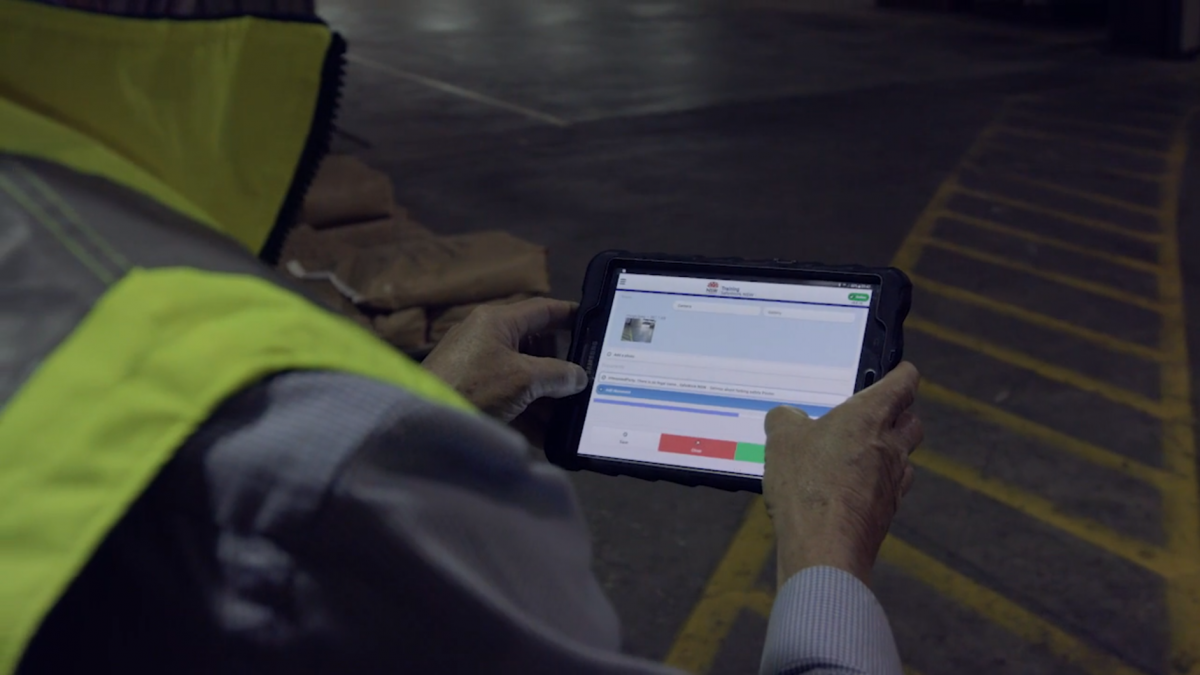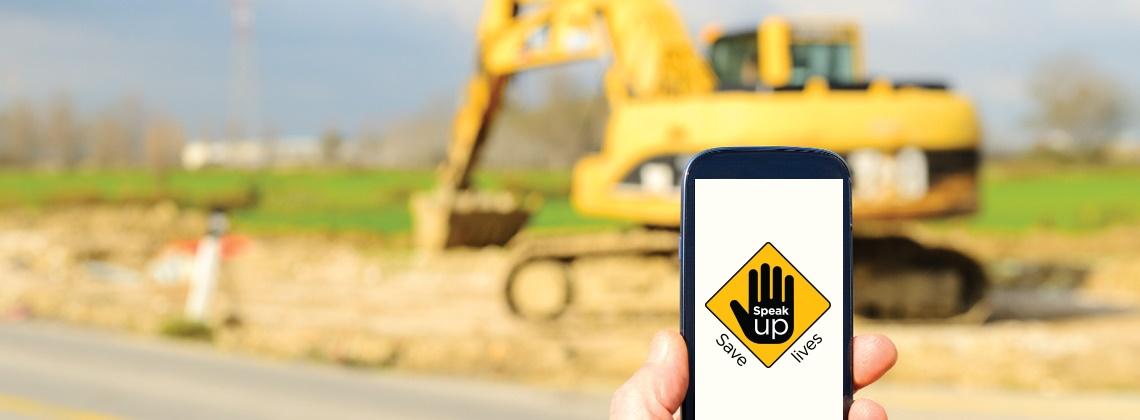In April 2019 SafeWork NSW responded to a workplace fatality where an 18 year-old apprentice tragically lost his life in a scaffolding collapse at a construction site.
As the state's workplace health and safety regulator, SafeWork NSW was tasked with investigating the incident. We didn't want to just investigate why the incident had happened. We had to understand how we can reduce the risk of it happening again on another work site.
A six-year program of work by SafeWork to improve work health and safety outcomes for the most vulnerable in our workplaces had also been hearing routinely of fear of speaking up.
Working with industry and the community we identified an opportunity to provide a new channel to make it easier for workers to Speak Up about work health and safety issues. The idea of a Speak Up App was formed with the aim of preventing work related fatalities and serious injuries and illnesses.
Understanding what to change
Putting the user at the heart of the problem is key to Human Centred Design (HCD). In order to understand what needed to change, we consulted with not only on-site workers but also management, inspectors, organisations that work with young people and those from diverse communtiy groups and government stakeholders as well.
To begin, we mapped out the current process for reporting a WHS issue. The process involved:
- the worker or member of the public had to call SafeWork or email the concern and workplace details.
- this was then captured and entered into the SafeWork data system and triaged for response
- photos were rarely provided and if they were, had to be manually recorded in a separate data base
- depending on the triage decision, an Inspector would be assigned and review the customer request for service
- follow up contact or a visit to the site to take action as appropriate
Additionally, the process of contacting us was far from effortless. We had to ask anyone who spoke up to call or email us and to give details like an accurate street address for their site. Another challenge was how we could make it easier for people to communicate if their main way of communicating was in a language other than English.
To discover how we might begin to improve the reporting process we went about talking to people to understand what could be better. Through our user research we synthesised the following key insights:
- Workers on site don't always feel confident reporting something that is unsafe to their boss.
- Some are young and don't want to make waves, others worried that they may lose their job or contract if they speak up or they have spoken up and their boss didn't listen.
- Members of the public could also be our 'eyes and ears' in regard to the identification of unsafe work practices.
- Calling a call centre or sending an email was not something everyone in the community would do to tell us of a WHS issue.
- Our inspectors do a fantastic job but they rely on us getting the highest quality information to them as quickly as possible to be able to take action so the process for contacting us needed to be fast, readily available and easy to complete.
- The new process needed to integrate seamlessly with our internal systems to enable a fast build and delivery on the product.
Designing with people

To turn insights into action, we started to speak to industry and other agencies to help us understand how to inclusively design services and to test our ideas with the workers who the report process relies on.
The project team developed process maps and documented a customer journey. Personas were created to test our assumptions of the product and what it would do. We also shared prototypes and mock-up concepts with the target audience groups to seek their views on font, colour, logo, wording, the data entry fields and the workflow overall. As we were developing in an agile way, we were able to rapidly action multiple iterations of improvements after user feedback.
Our research helped us realise that the most important feature we could build in was confidentiality. Workers might be casually employed, on temporary or labour hire contracts, or from a culturally and linguistically diverse community. These factors had meant it was less likely they would raise concerns about unsafe work.
Identifying systems to build or renew
Within the department we started to work through some of the internal business processes, considering how we might work around or transform the systems we'd had to date.
Key requirements, in order to get information to our investigators, were:
- The app needed to save files directly into the tools we use for our case management workflow.
- We had to avoid creating any extra data entry work.
While a few off the shelf options were promising, we eventually landed on developing a new app that linked into our existing data base system.
As we scoped our solution, we co-designed the process with our internal staff who were also a key user group. Together we sat and challenged the proposed process. We unpacked the existing way we did things, and delved into the 'why'.
Our design work explored the way reports outside contact hours were being handled. We mapped the existing process for reports from initial contact, through triage, inspector review and action taken, and began unpacking and exploring options for change.
We discovered a number of key improvements that would work for the community and our staff:
- The existing system involved telephone scripts and templates for note taking. These were often saved in case notes, but the templates might contain keywords unrelated to a case. It was making it harder to search through older notes for relevant information and data.
- We mapped a new process for reports from initial contact, through triage, Inspector review and action taken. After mapping the previous and new end-to-end processes we'd found we could achieve efficiencies saving around six minutes per photo we needed to document. In making it easier to send photos we hoped that more would be sent to us and this could potentially improve how to triage requests to ensure our Inspectors went out to matters that needed their expertise to improve health and safety in the workplace.
- The Inspector would also have access to the photos within the existing data base rather than having to search for the images.
With the user needs clear and our MVP solution mapped out we began development of our progressive web app, which was progressively tested with users to ensure we were continuing to meet user needs. This approach allowed us to get a web version ready quickly (launched October 2019 - 16 weeks from a concept on a white board to a fully functioning product), and to be iterate on learnings and deliver a native app later down the track.
From May 2020 the Speak Up, Save Lives app has been available for download in the Google Play and iOS App Stores - over 600 downloads to date.
The Speak Up, Save Lives app

App features:
- Allows reports to be made completely anonymously.
- Can be downloaded to your phone or used through your browser.
- Lets you send photos of dangerous conditions straight to SafeWork NSW.
- Allows you to send a GPS location if you don't know an exact address.
Using the Speak Up, Save Lives triggers a routine SafeWork NSW response: each report is assessed, and we take action as needed.
The app was developed in consultation with industry and with Christopher's family. It's now helping to break down barriers to reporting.
Our results since launching in October 2019
- 2174 submissions to SafeWork NSW .
- 645 improvement notices and 115 notices prohibiting unsafe work activities.
- $59,040 in penalties.
- 1 - 2 minutes saved in triage work per entry
Speak Up to let us know about unsafe work anywhere, anytime.